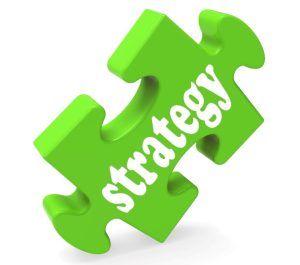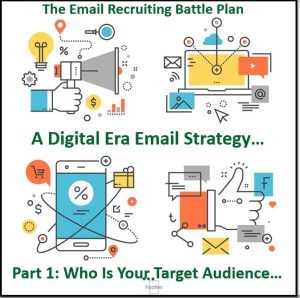Put on your marketing hat. Think like a marketer that happens to work in talent acquisition. This new model takes inbound recruiting to the next level. Inbound recruiting, like inbound marketing, draws the potential audiences to the organization’s internal sites, not to sell them, but to inform them.
This new paradigm has emerged that suggests a consumer-like digital experience is required in talent acquisition. The consumers buying cycle is being mirrored and labeled a candidate apply cycle. And that pre-apply cycle is called the candidate’s journey. That path or journey is dotted by stops along the path for information that will entice the prospect to move toward the application process. In this era, transparency is appreciated and rewarded; the previous models are failing.
Our product is the “work” that we are offering, which we call our talent brand. And the profession minded target audience of talent needs to know the impact of working at your organization on their careers. In addition to dealing with the WIIFM (what’s in it for me) inquiries, the talent acquisition marketers need to provide authentic insights into the organization.
Our need for “butts in seats” requires a more sophisticated and thoughtful strategy that takes into account the configuration, the mind and the needs of the target talent. And yes, we are just talking about an email strategy.
The purpose of this series is to illustrate how to double your email recruiting results. To gain this increase in effectiveness of your email recruiting campaigns, you need a digital strategy. This article will discuss why a strategy is required to achieve promised improvements in your email success.

In a very real sense, your strategy is; the battle plan for the battle of the inbox on the digital battlefield. As you scout your adversaries, as well as, the shared target audience, in this digital quest of capturing the attention of your target talent, you realize that the execution of your strategy is the key to success. Your reconnaissance will reveal a need for a strategy that incorporates the talent landscape (especially, the talent supply), the mind or perspective of the targeted talent and importantly, their needs. This discussion of why we need a digital email strategy will take place in three parts. Before you write an email to entice your target talent audience to respond, you need to ask three questions.
- Who Is Your Target Audience?
- How Does Your Target Audience Think?
- What Does Your Target Audience Need?
A Digital Era Email Strategy Part 1: Who Is Your Target Audience?

Who is your target audience? In today’s digital world with its focus on personalization and affinity, it is easy to distribute your audience into segments. Many of us divide our target audiences into key talent segments that map to the type of talent we are recruiting. In each of those talent segments, four things frame this conversation:
- High-demand, Low Supply of Talent
- It seems like everyone is looking for the same type of talent. According to the CEB (Corporate Executive Board), we are. In an eye opening 2016, study, they found that 90% of the S&P 100 were recruiting for the same 23 roles and those jobs accounted for 40% of all job postings.
- Competition’s impact on the talent supply means that there will be a bidding war for certain cherished talent. If you are not able to participate from a compensation or desired culture or brand perspective, then you may have to train the talent you need or take other innovative steps. Your emails will need to distinguish you from the competition (i.e. personalized one off efforts vs. a “spray and pray” approach).
- Talent giggers that desire independence
- There is an ever increasing amount of key talent is opting to be freelancers. Whether they are motivated by the high demand for their skills or a desire to be more in control of their lives, an oft cited Intuit study proclaims that 43% of 2020 workforce with being part of this gig economy.
- The talent gigger’s impact will be to require organizations to create an inclusive way of collaborating with external teams. Not only that, given the free agent nature of the relationship, there will need to be clearer SLA’s (service level agreements) on the work to be performed. That sentiment will need to be communicated in our email correspondence.
- Five different audiences in a multigenerational workforce
- To add another layer of complexity to our Millennium obsessed talent branding efforts, there are five generations in the workforce with whom we need to communicate. It goes without saying each generation has been influenced by unique social, economic and political experiences that impact their thinking about their work and careers.
- The impact of the multigenerational workforce will be instead of one size fits all, it will become, “one size fits one” (aka Rusty Rueff) when it comes to talent in the future.” Not only does each generation have a set of values, but it also seems that each us, as individuals do as well. Welcome to an era of personalization in email recruiting. Not only will you need to personalize the message to mention their gifts, skills, and abilities, but you will need to write the email using language that will relate on a generational level.
- An increasingly diverse target audience
- Diversity matters! There is a diversity mandate across businesses and organizations. Research giant Rand proclaims there is a common desire for a workforce that reflects the “evolving racial, ethnic, gender, socioeconomic, ideological, and generational makeup of society.” In addition to the legislated diversity agenda, there is a new reality that by 2020, 44% of the workforce will be ethnically diverse and 50% of that group will be women.
- Diversity’s impact will be to meet their workforce goals organizations must be able to be attractive to ethnic and gender diverse people. Diversity will become more than an initiative; it will be a reality. In our email communication, we must use language that resonates with a diverse audience.
Knowing your target audience is the first part of designing an email communication strategy in the digital era. This knowledge goes far beyond just knowing their titles and where they presently work. It requires that you consider other aspects of what is called the talent persona. That information could include diversity and multi-generational factors. Also, it is important that you distinguish your brand from others as much of the key functional types of talent is in short supply, and you as an employer are competitively evaluated. The short supply of skilled talent will also enhance the gigging career model which increasing factor in successfully meeting your workforce plan. Just to get their attention using email recruiting will require some creativity in your battle plan.
Next time I will discuss the second part of developing the strategic target talent persona—figuring out how your target talent audience thinks.
Outline: A Digital Era Email Strategy
- The Inbox Is The Battlefield In The Digital War For Talent
- The Email Recruiting Battle Plan: A Digital Era Email Strategy
- Who is Your Target Audience?
- How Does Your Target Audience Think?
- What Does Your Target Audience Need?
- The First 3 Seconds-Guess What I Have For You.
- The Next 5 Seconds-Why You Should Want It!
- The Final 7 Seconds-How You Can Get It!
- Before You Press Send–An Email Recruiting Checklist.
Images: Graphicstock
